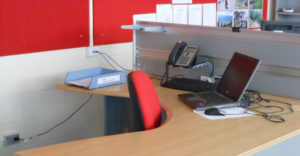A popular talent-retention strategy used in business today is to allow people to work more flexible hours. Whether it’s a nine-day fortnight or four days in the office and one day working from home, it’s becoming the norm to never actually have an entire team in the office at the same time.
Naturally, there’s a big benefit for employees in not having to go into the office every day, and not just for working mothers either.
The pros: Employees love flexi-time because…
- Less stress by avoiding the rush-hour commute;
- More quality family time at home and possible savings on child care; and
- The ability to attend to personal appointments during business hours.
The cons: Employees can struggle with flexi-time because…
- The long hours often required to be worked in a compressed week, which can be physically and mentally draining and put pressures on home life;
- Possible family distractions encountered when working from home;
- The lack of daily interaction with other employees, which can affect promotion prospects and lead to a sense of isolation.
Despite this, many employees consider that the benefits of flexible hours outweigh such possible side-effects and more are putting their hand up for the opportunity every day.
But how should employers think about flexible work arrangements?
Does productivity take a dive and can you really monitor what your team is up to when they are not sitting in front of you? The answer to this would depend on the type of business you conduct and what your employees’ roles are within it.
If they are judged primarily on their results, such as sales people, then their performance away from the office can be judged by the number of clients they visit and the amount of revenue they bring in each week.
If they are more admin-based employees, the advent of highly integrated computer networks means that their work, which would mostly be done on a company computer from home, could easily be monitored by an employer at the office.
The bottom line is whether your employees are trustworthy and have the necessary discipline to work without supervision. Deciding on suitability for flexi-time would therefore require taking personality into consideration as well as the role being performed.
Pro-tip #1: A flexible workplace attracts top talent
One sizeable benefit is the opportunity to attract top talent when you don’t have a lot of money to throw around. Flexible working conditions can be just as attractive to a top performer as a large salary package. Flexibility also gives you access to people such as working mothers and the self-employed, who may have exceptional skills to offer, but aren’t able to commit to a regular nine-to-five job.
If that’s not enough, other bonus points for a flexible workplace:
- Having a less stressed and more positive workforce;
- Less absenteeism and higher staff retention rates;
- Savings on office space and overheads;
- A competitive advantage through altering or extending hours of operation; and
- Getting the most out of employees who perform best outside normal working hours.
An employer’s ability to provide flexible working hours is not only determined by the nature of their business, but also its size. Many small businesses simply do not have enough staff with similar skill sets to be able to operate efficiently if certain personnel are consistently absent or only contactable remotely.
Be sure to consider the possible risks of flexible working:
- The security risks that can be associated with employees accessing company data from home (i.e. the possibility of others getting hold of sensitive information and the inability of company IT staff to adequately protect home-based computers);
- Possible animosity amongst employees if only certain positions allow for flexible hours and some staff are forced to regularly cover for their absent team mates; and
- A lack of appropriate staff ‘on the ground’ if something unforseen requiring urgent attention were to happen.
As with most new concepts, there are arguments both for and against. From an employee’s point of view, you need to decide whether you have the organisation and discipline to be able to work from home or the stamina to work longer hours over a shorter period of time and whether the lifestyle advantages flexibility offers outweigh the possible negatives.
As an employer, you have to decide whether your business is large enough and flexible enough to be able to tolerate the comings and goings of a flexible workforce and whether the benefits of staff satisfaction and retention outweigh the potential problems and risks.
Perhaps the best approach is to do what most successful employers have always done and that is to offer your staff as much support and flexibility as good business practice will allow.





